A little leaven leavens the whole lump
A little leaven leavens the whole lump
by Ydi Carstens
A few years ago a group of young artists with interest in the complexities of art and faith started meeting once a year in Stellenbosch, establishing a unique community with one leg in the church and the other in the contemporary arts. They called it ‘The artist’s Gathering’. A few years earlier, another group had started curating contemporary art exhibitions about 800 kilometers along the Eastern coast of South Africa, in Makhanda (formerly Grahamstown), and called themselves ’40 Stones in the Wall’.
When news of both of their activities reached one another, conversations and partnerships grew, permeating their lives much like leaven permeates dough. Their partnership found expression in a number of art and faith initiatives.

One of these was a group show titled ‘Unleavened’ which was opened in Stellenbosch shortly before the Covid-19 lock-down. The exhibition coincided with an ambitious contemporary African art Triennale, which had started a month earlier and in some ways built on the work of the Zeitz MOCAA in Cape Town. (Both of these offer enough material for articles of their own).
Hoping to offer a Christian perspective on the growing discourse within African Contemporary art, the ‘Unleavened’ exhibition was imagined as a place of restoration but also of provocation. An open call was sent out within the community and works selected with the theme Leaven, a metaphor “through which to view the work of young artists as they explore the presence and impact of culture, gender, politics and religion in their lives today”.
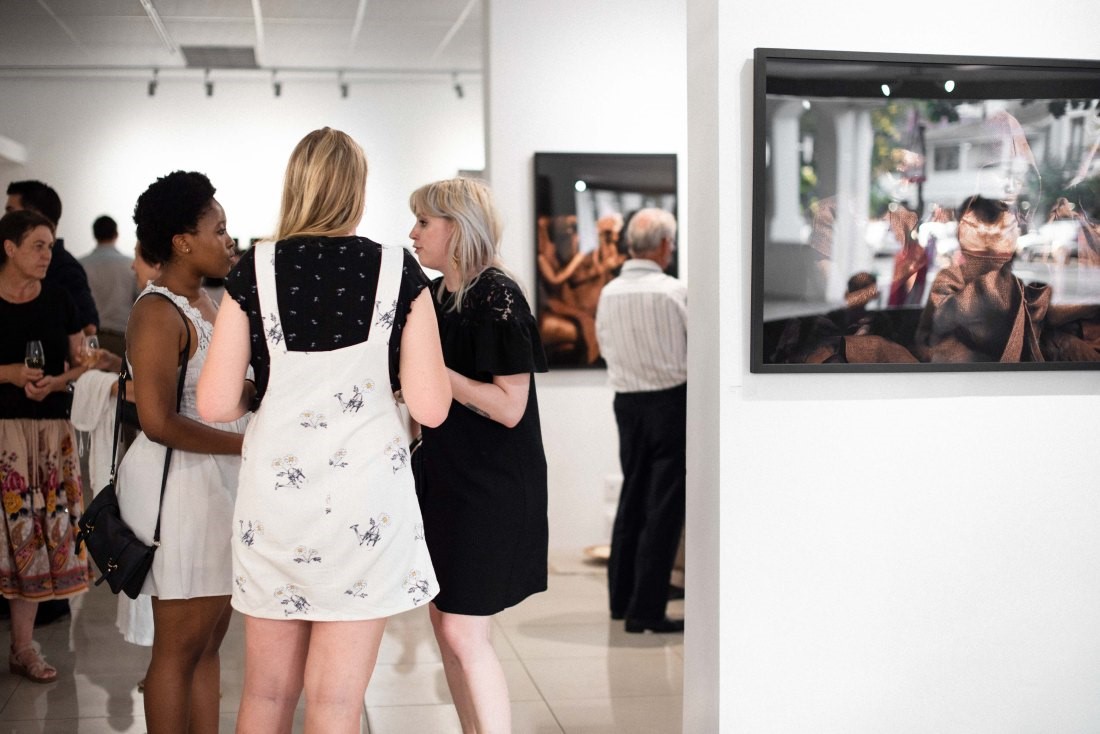
Because of the enduring importance of religion in Africa, it is impossible to ignore questions of faith in the contemporary arts. Although African art has in recent years grown more trenchant, as seen in the work on display at the Zeitz Mocaa, church-going and morality is still regarded as part of culture in South Africa. The ‘Unleavened’ organizers felt compelled to address “the conceptual complexities presented by post-modern art while engaging with visual faith in a way that is both biblically credible and sustainable”.
Artists and organizers did much to make the pieces as accessible as possible, being aware that the transgressive legacy of contemporary art doesn’t always invite spontaneous interest in communities of faith. Artist statements, a video interview and a walkabout in lieu of KRUX Thursday night dialogues created a platform for young people to engage with the artworks. An in-gallery workshop about the art of seeing was scheduled by the US theological seminary but was cancelled due to the growing health concerns surrounding Covid-19.
Each of the participating artists had a different way of thinking about how their faith permeates their artmaking, or how certain aspects of culture permeates society, for good or bad.

Ntobeko Mjijwa: Death in the Room, oil on board, 203 x 81 cm
Straddling the verge between reality and fantasy, Ntobeko Mjijwa looks at the ambiguous presence of death in our lives: negative, indifferent, positive and even alien. He asks whether we should fear something that might ultimately have only a limited dominion, despite what we can see. This painting by Mjijwa (artist-in-residence at the studentY UCT) is an adaptation of a famous photograph of anti-apartheid activist Steve Biko’s wake.

(TOP) Marijke van Velden: Mannin, 2020, Black Toner Transferred onto 200gsm Fabriano, 95 x 100.5 cm; (BOTTOM) Marijke van Velden: “ek is”, 2020, Die Bybel, 1953 & White Gouache 18.5 x 27 x 3 cm
Marijke van Velden uses art in a confessional way, exploring the religion handed down to her through genealogy and culture. She engages with the biblical text both conceptually and materially, making visible the ‘act of interpretation’ and the creative power of language. By blurring the boundaries between text and image, she hopes to stimulate meaning-making around the mystery of the biblical text.

With a video piece the artist Mosa Anita Kaiser examines the intersection of race, gender and religion as she explores the tension of being a woman of colour and a Christian. Her series ‘The Assumptions of Mary’, draws on Biblical symbolism, ecclesiastical art and black feminist theories to give voice to this tension, as a step towards liberation and healing.
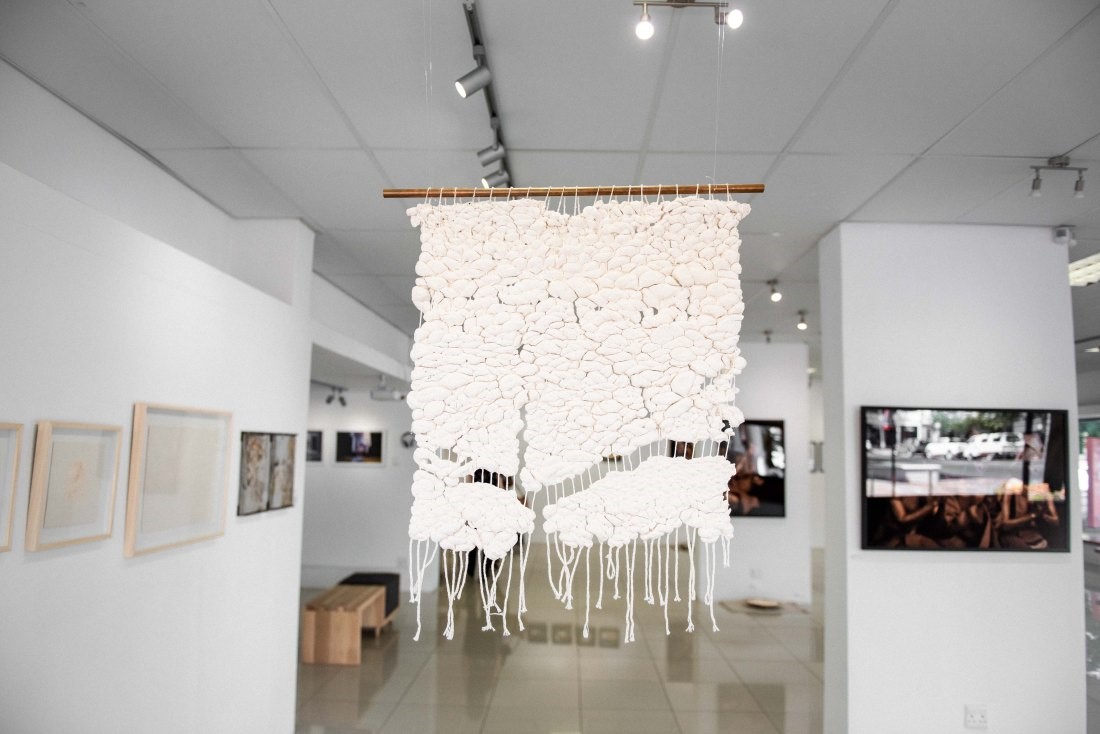
The young conceptual artist Jana Visser’s transitory bread sculptures explore the everyday, the passage of time, and her own temporality. Through processes of kneading, weaving and drying, the raw dough becomes layered, reflecting the cumulative effect of time – a continuous, gradual layering of moments, decisions, hesitations and durations.
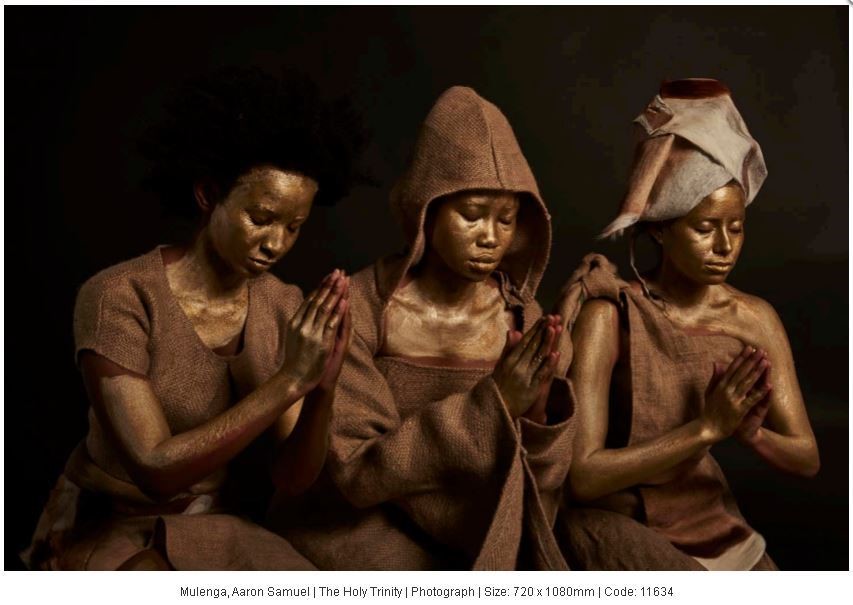
Aaron Samuel Mulenga: The Holy Trinity, photograph, 72 x 108 cm
For ‘Unleavened’ the Zambian artist Aaron Samuel Mulenga presented an installation of photographic works that reimagines the Holy Trinity through Christian Iconography and spiritual symbolism drawn from his Zambian culture. Baskets with maize meal, water, coffee and unleavened bread accompanied the Trinity images and explored how Christian symbols like communion relate to African culture and history.

Marieke Kruger: Emergence I, 2019, charcoal on Fabriano aquarelle paper 300g, 200 x 150 cm
Well established artist Marieke Kruger is interested in the transformative power of drawing and the psychological and spiritual dimensions of identity formation. Her drawings for ‘Unleavened’ are informed by the art lessons she gives at a local correctional facility, a space in which unusual relationships are forged and creative practices mutually inspired.
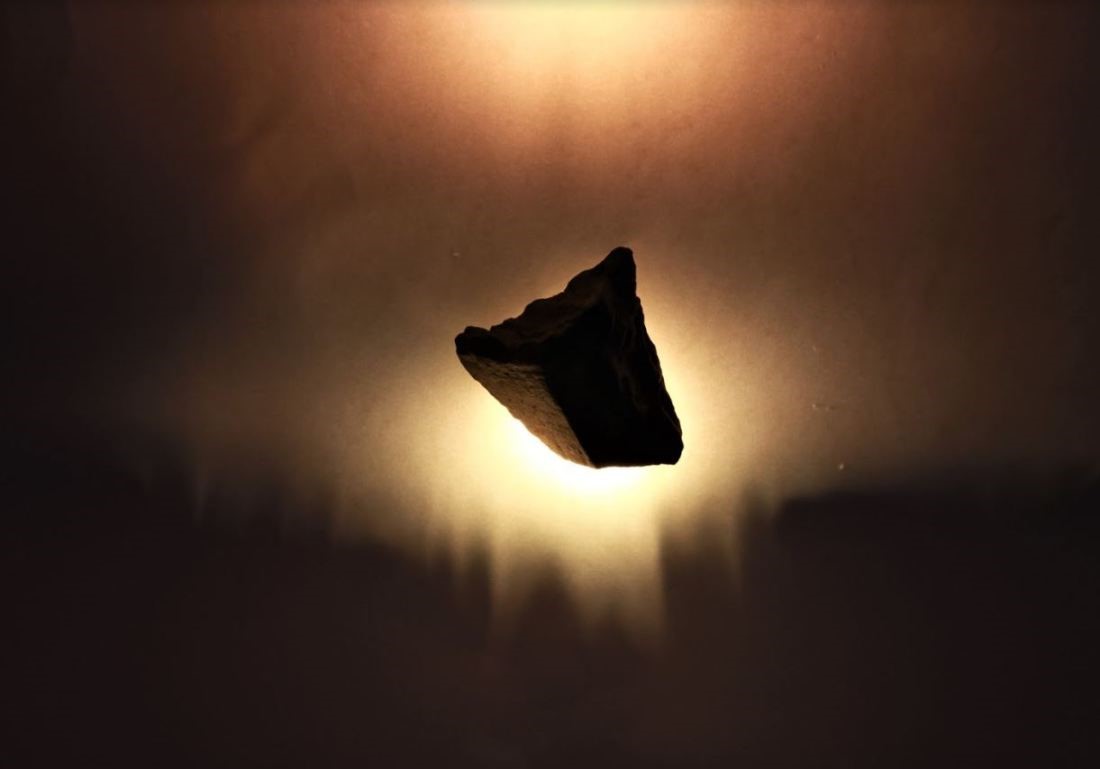
Carmen Maria Titus: Stones for Bread, photograph, 150 x 210 mm
Carmen Maria Titus’s series “Stones for Bread” expresses a season of ‘creative famine’ caused by her struggle to reconcile the Christian faith (that is at the core of her personal identity and nourishes her creative practice), with the post-modern philosophies of a contemporary secular arts education. Titus considers this work to still be in process, reflecting an ongoing search for resolution and clarity.
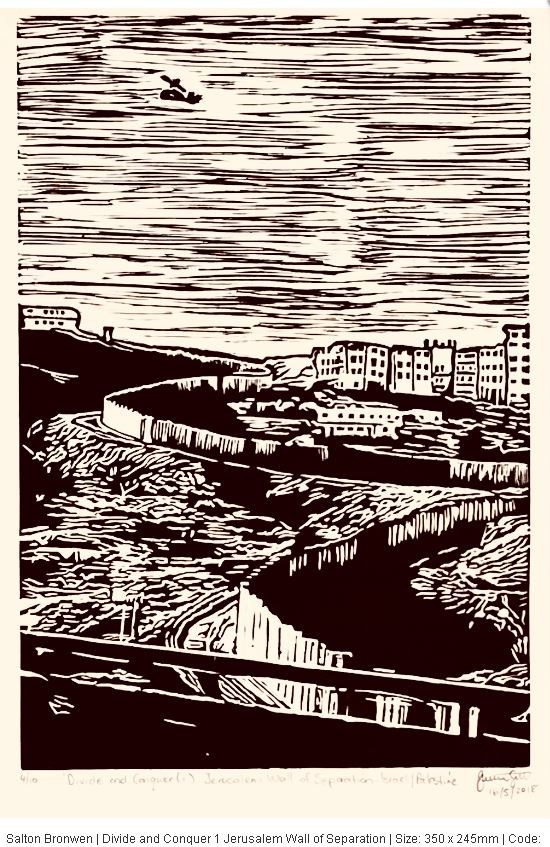
Bronwen Salton: Divide and Conquer 1, Jerusalem Wall of Separation, 23 x 25 cm
Bronwen Salton presents part of her series “Anamnesis, ‘a remembering’”, which tracks her journey through a conflicted Israel and Palestine. The fragmented marks speak to her time spent processing the sites of ancient and modern conflict simultaneously marked by a tangible presence of true holiness, miracles and salvation contained in the memory of people, landscape and terrain.

Elbie Visser: Quiescence, 2020, oil paint and Namibian magnetite on board, 30 x 40 cm
Elbie Visser explains that the consumer mentality and overstimulation in our culture had her longing for the silent and spacious landscapes of the arid desert of her homeland Namibia. Her paintings are a reflection of a personal ‘unleavening’ – a process of stepping into rest while suspending herself within the discomfort of her own thoughts, questions and underlying emotions.
In the mysterious way art so often does, each piece interacts and interplays with one another in ways unanticipated by the curators. Mjijwa’s painting makes us reflect on how figures like Biko continues to haunt the conscience of our country – an unspoken presence permeating our society. Van Velden’s piece is a confession of vulnerability and how deep-seated suffering percolates our psyche with the need for a Healer. Kruger and Titus see artmaking itself as the leavening agent, facilitating transformation in their own lives or in the lives of others. For Salton and Elbie Visser place and presence is the operating agent, whether in the politically loaded Jerusalem or the still, quiet Namibian desert, our ‘being-in-place’ inspires us with new understanding and a distillation of our faith.
*******
For more information about the 40 Stones collective, visit https://www.40stones.org/
Ydi Carstens is artist in residence for Krux Africa, http://www.krux.africa/






